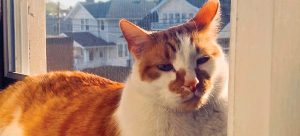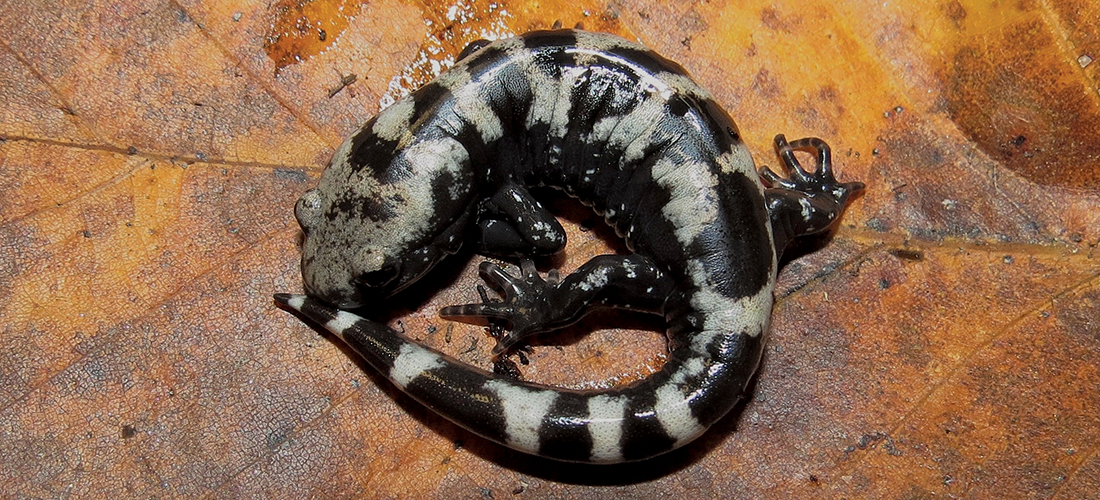
The retreat — and reach -— of biologist Ann Berry Somers
By Jim Dodson
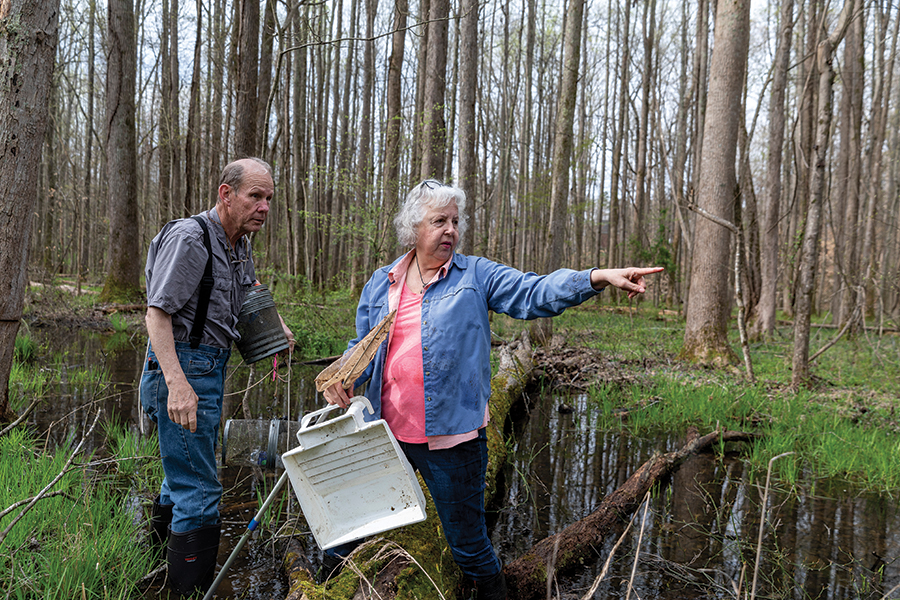
“This is the place I love most,” says Ann Berry Somers, “because it’s where I do the thing I love most — to share and teach people about the Earth. There’s always something exciting going on down there in the pool, for instance. Let’s go have a look.”
The place she means is a lovely ephemeral pool in the midst of a 24-acre forested vale of mature hickory and poplar trees off Church Street Extension. There, the longtime UNCG senior lecturer of biology and leading advocate for box turtles, reptiles and amphibians, has made her home in a passive solar house she helped build in 1984.
On a spectacular spring morning, while much of the world is sheltering indoors due to the spread of a marauding killer virus, the wild birds of Ann Somers’ tidy forest are singing their avian hearts out as she sets off to find the elusive marbled salamander, North Carolina’s magnificent state salamander.
“Better put on these boots and take one of these,” she advises her visitors, proffering black rubber wading boots and dip nets for exploring the boggy pool below the house. Setting off, she explains that at least one other species of salamander — the spotted salamander — has recently emerged from the egg stage and the larvae have been feeding in the pool for days. There are four salamander species who depend on this wetland habitat. All four are listed as species of Management Concern due to habitat loss, making this restoration project even more important.
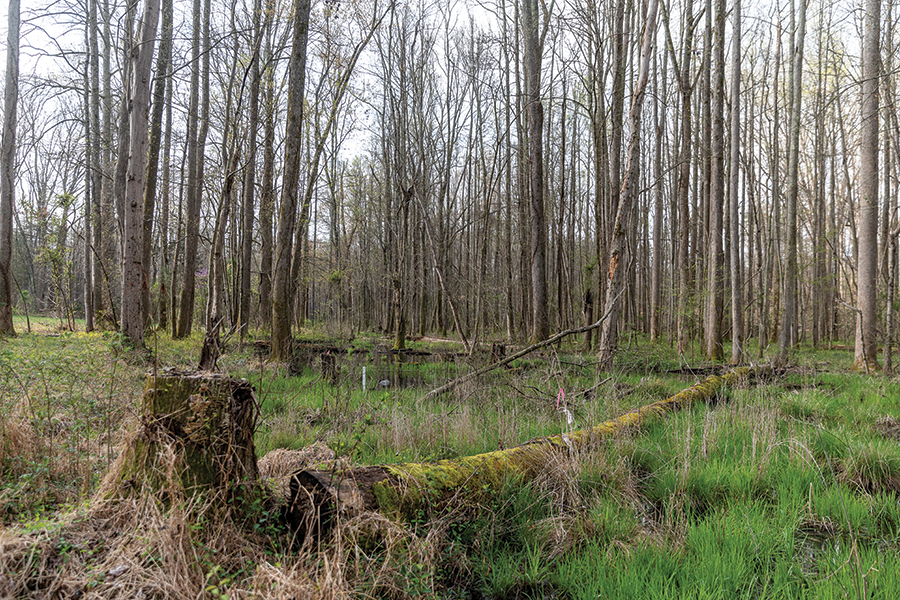
“It’s really a race for them to transform into terrestrial phase before the water in the pool disappears, though if they’re lucky that won’t happen until May,” she elaborates, sloshing knee-deep to retrieve a series of minnow traps attached to empty plastic bottles.
“By that point most will have absorbed their gills and be entirely adapted to land and will go underground or live deep in the leaf litter for several years before they return in the pool in order to reproduce years from now.”
The abundant life in Ann Berry Somers’ ephemeral pool — also known as a vernal pool, a body of water that seasonally appears with spring rains and typically vanishes by summer — was given a major boost by a restoration project begun some eight years ago first with a veteran forester named Joe Kelleher who just happens to be Ann Somers’ first cousin. NC Wildlife Resources Commission herpetologist Jeff Hall and other of Ann’s colleagues from the NC Herpetological Society helped survey the pool and U.S. Fish and Wildlife biologist Laura Fogo helped come up with matching funds to do the modifications required to restore the hydrology according to a design created by Emeritus N.C. State hydro-engineer Greg Jennings.
This team of professionals plus some of her UNCG student volunteers, she explains, collaborated on an innovative underground dam that required digging a 200-foot-long ditch that was 1-foot wide and 6-feet-deep. A curtain-wall was created using a thick pond liner. The liner prevented the annual spring pool, which relies on rainwater, from being absorbed too quickly by the surrounding forest of trees. Over the years, Cousin Joe’s job has been to selectively thin the trees in order to maintain the delicate balance of nature that provides just enough light and water to support this annual baby boom of amphibian and insect life.
“This project never would have started without Joe,” Ann observes, leaning down to inspect a gelatinous green mass of algae floating on the tea-brown water beneath a patch of briars and fallen limbs, the signature of female salamanders at work. “Trees soak up a surprising amount of water, don’t they Joe?”
Cousin Joe is already a couple dozen yards farther along the pool, checking traps by a downed poplar tree to see if there are any marbled salamanders on view.
“Yes ma’am, that is the case!” he replies. “These trees can suck up 10,000 gallons of water per day in transpiration,” he adds with a booming laugh. “Got lots of marbled swimmers down here, by the way,” he cheerfully reports.
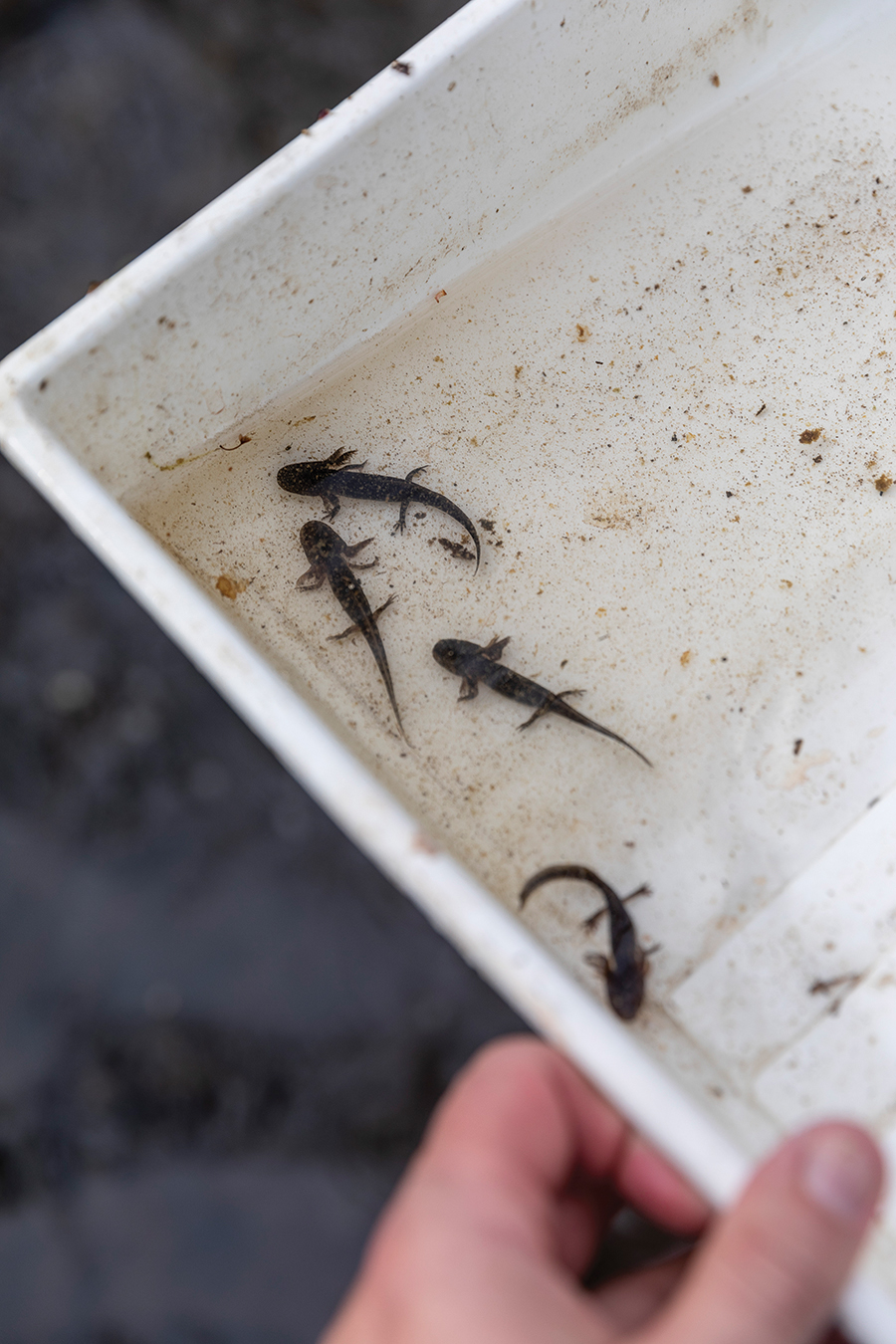
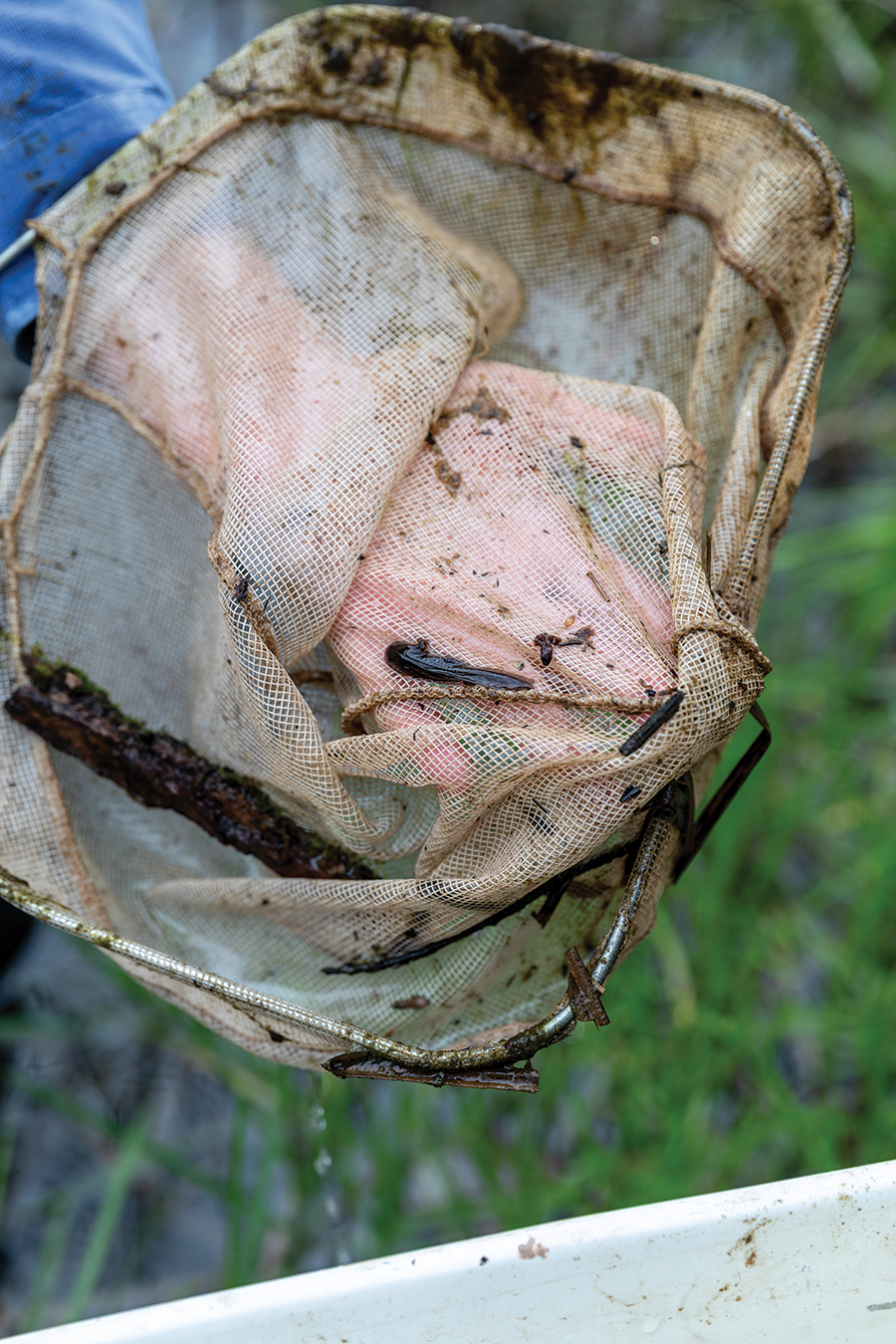
Somers delicately lifts the gelatinous mass from the water with the care of a priest holding an infant. On closer inspection, she discovers a few tiny salamanders still working their way out of the egg mass toward the next stages of their evolution in the pond. “Oh, how nice! Come look,” she urges her companions. “There are still a few stragglers coming out of their egg stage! They’re rather late and I hope they make it before the water vanishes!”
Life at every stage is a race for survival.
“If I may ask,” says one of her rubber-booted visitors, “How do salamanders actually reproduce?”
“Oh, it’s terribly exciting! It happens on a rainy night in late February when the temperature is above 55 degrees. The normally subterranean adult salamanders congress in the pool in a rite of spring frenzy of breeding activity that is one of the startling impressive events in the natural world. In the aquatic swarm, males lay tiny white sperm packets on the dead leaves in the water and court the females by nudging them to absorb the rice-sized packet into their bodies, which will fertilize their yolked eggs. Later, the females lay a gelatinous mass of eggs, around which symbiotic algae grows providing oxygen for the growing larvae until they are strong enough to emerge and feed in the pool.”
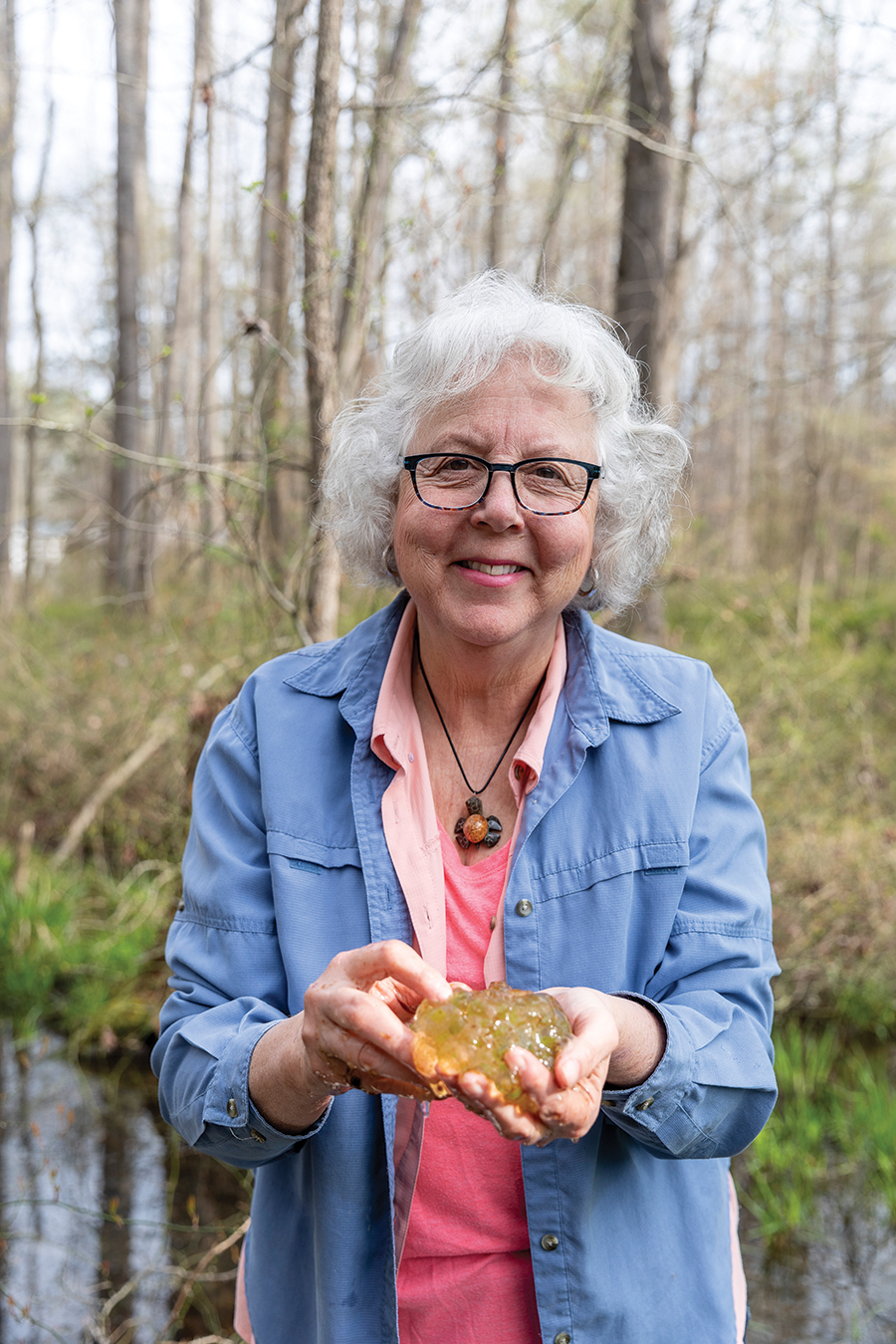
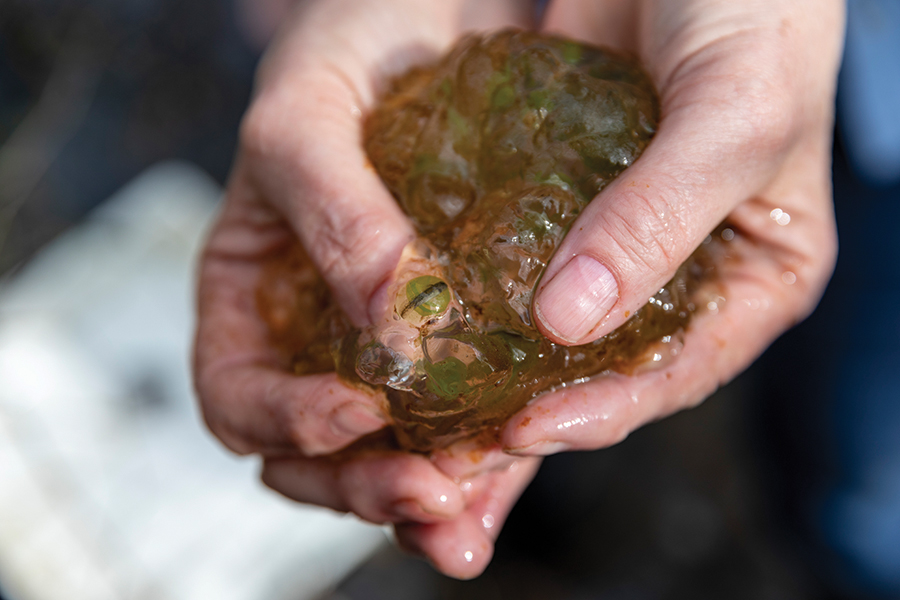
Returning the egg mass gently to the surface of the pool, she chimes, “Good luck, little ones. We’re pulling hard for you!”
She looks up and smiles.
“My students love this sort of thing — especially the local kids . . . getting wet and dirty and learning about creatures they’ve never seen in the wild. Isn’t this fun?”
It is indeed.
And so is Ann Berry Somers who, at 68, is regarded as a leading environmental advocate and a passionate promoter of citizen-science, a woman who has dedicated her life to better understanding and preserving the vital role snakes, frogs, salamanders and turtles play in maintaining the fragile balance of life on Earth.
Last year, the State of North Carolina showed its gratitude for her life’s work with a host of prestigious awards that reflect her stature as a true force of nature and woman of the wild. The prizes included NCWRC’s Thomas L. Quay Wildlife Diversity Award, a Distinguished Teaching Award in STEM Education from the North Carolina Association for Biomedical Research (NCABR), and the Governor’s Award for Excellence in Public Service.
What explains her devotion to helping others learn to respect and appreciate these wild and typically unseen critters like the spotted salamander?
“They are an important part of the web of life we share,” Somers answers with gusto as she sloshes on to where Cousin Joe has scooped up a dozen marbled swimmers. “What happens to salamanders and frogs and snakes can happen to other species — including us — if we don’t take care of the environment. These are creatures, in some cases, that have been on Earth longer than we have — we have fossils that are 30 million years old! We have only been around a few hundred thousand. To watch them suddenly disappear, to blink out one by one as pollution and loss of habitat alter the planet, is absolutely tragic and consequential,” she says, pausing. “The sad thing is, that it is happening all over the world at a more rapid rate than ever.”
It’s passion like this that has inspired Ann Somers not only to teach a course on endangered sea turtles in Costa Rica for the past 25 years, but also to lead school groups and conservation-minded folks into the wild for decades in order to learn about the importance of snakes and turtles and amphibians, to spread the gospels of conservation and environmentalism that are so near and dear to her heart.
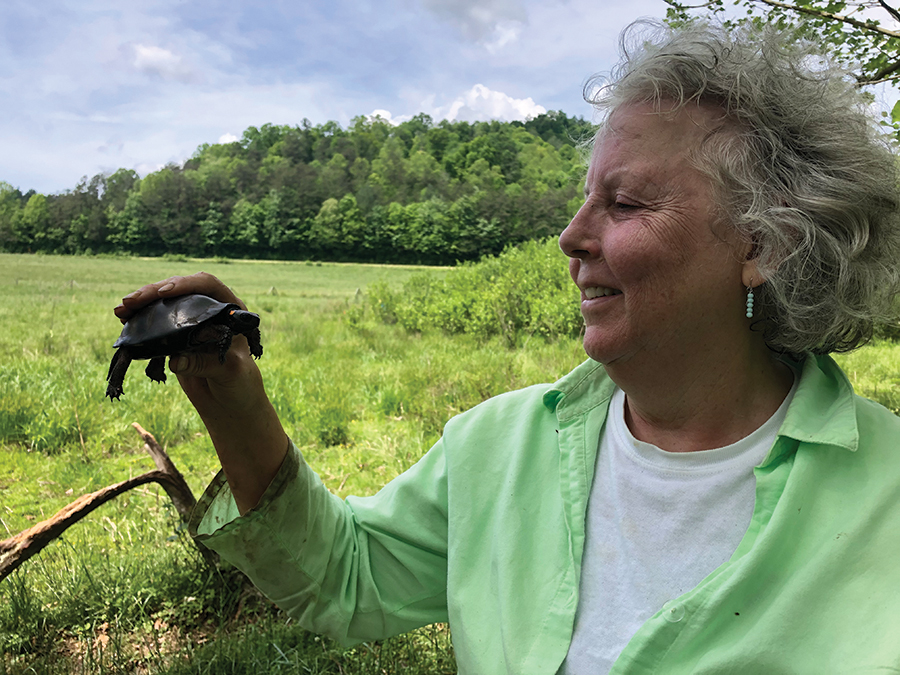
Last year, for example, the woman who found the last threatened bog turtle in Forsyth County back in 1991 — a gentle species that once flourished in these parts — grew so keenly interested in vanishing coral reefs, she organized a course with her UNCG students to Little Cayman Island. There they donned scuba gear and learned about the environmental crisis facing ocean reefs up close and personal.
“We had our class picture taken underwater,” she points out with a laugh.
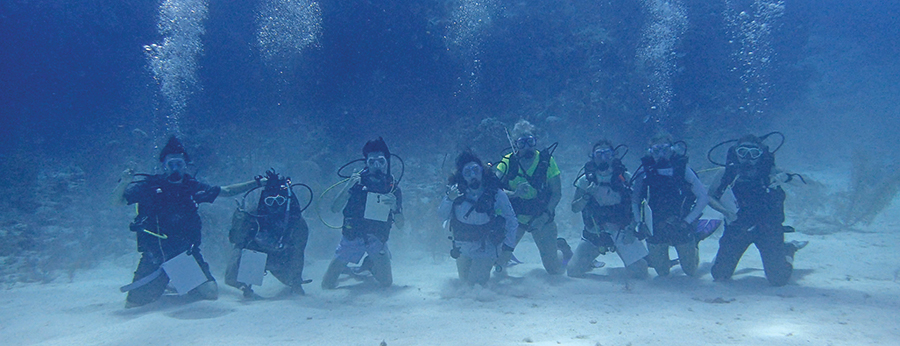
That experience in part inspired her to help organize a conference for the NC Wildlife Federation called the Ocean Advocacy Workshop that was originally scheduled for this same spring morning at UNC-Wilmington — only to be postponed for a year due to the pandemic.
“Ironically, one of the interesting things that’s happened because of this crisis is the positive effect it has had on some aspects of the environment. With so many airplanes and cars idle, the air is noticeably cleaner, the skies clearer across the world, pollution way down in places,” Somers observes. “In Venice, I understand, the canals have cleared and dolphins have once again been spotted. Maybe we should pay attention to how fast things can get better if we would just let up on the constant pressure we put on nature, if we would just listen and hear the difference in a quieter world.” She adds, “It’s not just about saving turtles.”
But to be clear, turtles do matter to Ann Berry Somers.
Twelve years ago, in partnership with state parks and private landowners, Somers spearheaded the creation of something called the Box Turtle Connection, an innovative volunteer project aimed at collecting data on vanishing native turtle populations, including threats and conditions affecting box turtles in the wild. Today, the program boasts 32 different turtle-monitoring projects ongoing across the state. “It’s designed to go for 100 years and outlive everyone currently enrolled in order to educate the next generations of scientists. Some of the turtles we are marking will be found by the next generations, they live that long,” she notes, leading her guests out of the ephemeral pool into a meadow where sheets of discarded tin roofing repose in weedy places near what appears to be a large pile of winter damage.
Flat sheets of roofing tin lying about, one learns, are designed to attract snakes for use in her popular classroom programs. The pile of limbs and brush she calls her “Miracle Brush Pile” because it’s home to dozens of species ranging from snakes to birds, box turtles to small mammals. “You wouldn’t believe the diversity in there.”
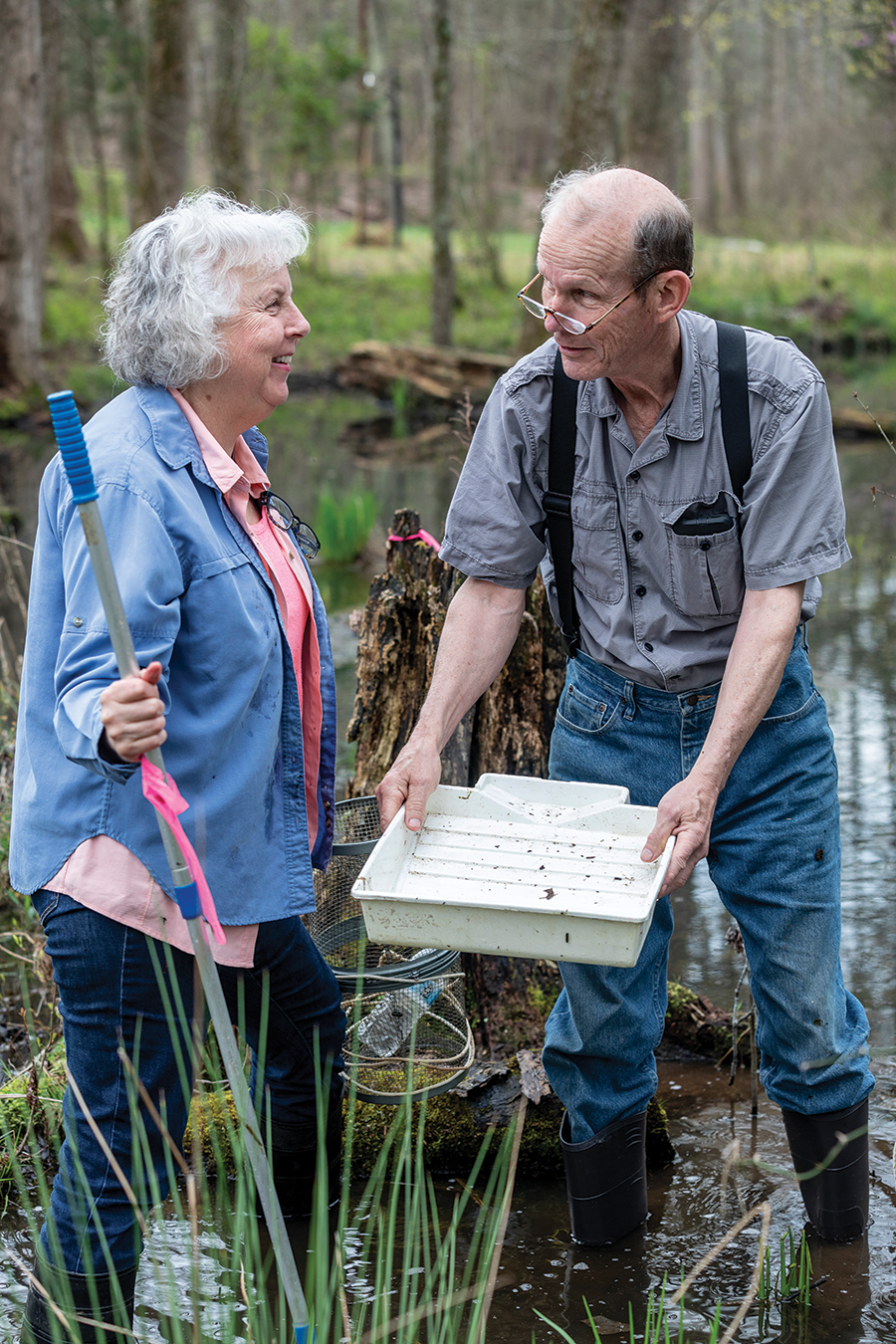
She carefully lifts up several pieces of tin but finds no snakes in residence for the moment, only a young skink making a hasty retreat.
With a pleasant smile, she proposes, “Shall we go see the graveyard? It’s just a 20-second walk up the hill behind the house.”
In a sense, Ann Berry Somers was destined to be a champion for the endangered lives of bog turtles, spotted salamanders and red-bellied snakes.
For like those creatures, her connection to the Earth is deep and ancestral, an essential part of her family DNA.
She and Cousin Joe — not to mention 51 other Berry cousins — hail from a large and celebrated Greensboro family that has made no small contribution to the preservation of the Earth.
In 1924, Nathan William Berry started a coal company called Berico in Greensboro. Pop Berry and wife Elizabeth lived on Colonial Avenue and had 13 children. In 1942, Elizabeth Berry was named “Mother of the Year” and feted at the Waldorf Astoria hotel in New York City, where her name is displayed on a plaque today. When asked by a reporter how she managed to raise 13 children who were so accomplished, she famously replied, “Wholesome neglect.”
This was the Berry matriarch’s code for “allowing her children to follow their own hearts and instincts in life, to explore and learn in the natural world,” explains Cousin Joe, who points out some of the significant things the Berry siblings accomplished.
Aunt Merse, No. 2 in the succession, became a nun with the Daughters of Charity and managed several hospitals in Bolivia. Sons Joe and Jim became outstanding aviators in WWII.
Child No. 3 was named for his papa, William Nathan Berry. He grew up to become a Roman Catholic priest, taking the name “Thomas” after the influential philosopher Thomas Aquinas. Thomas Berry became a religious scholar who wrote several books about Asian religions and started the Riverdale Center for Religious Research in Riverdale, New York.
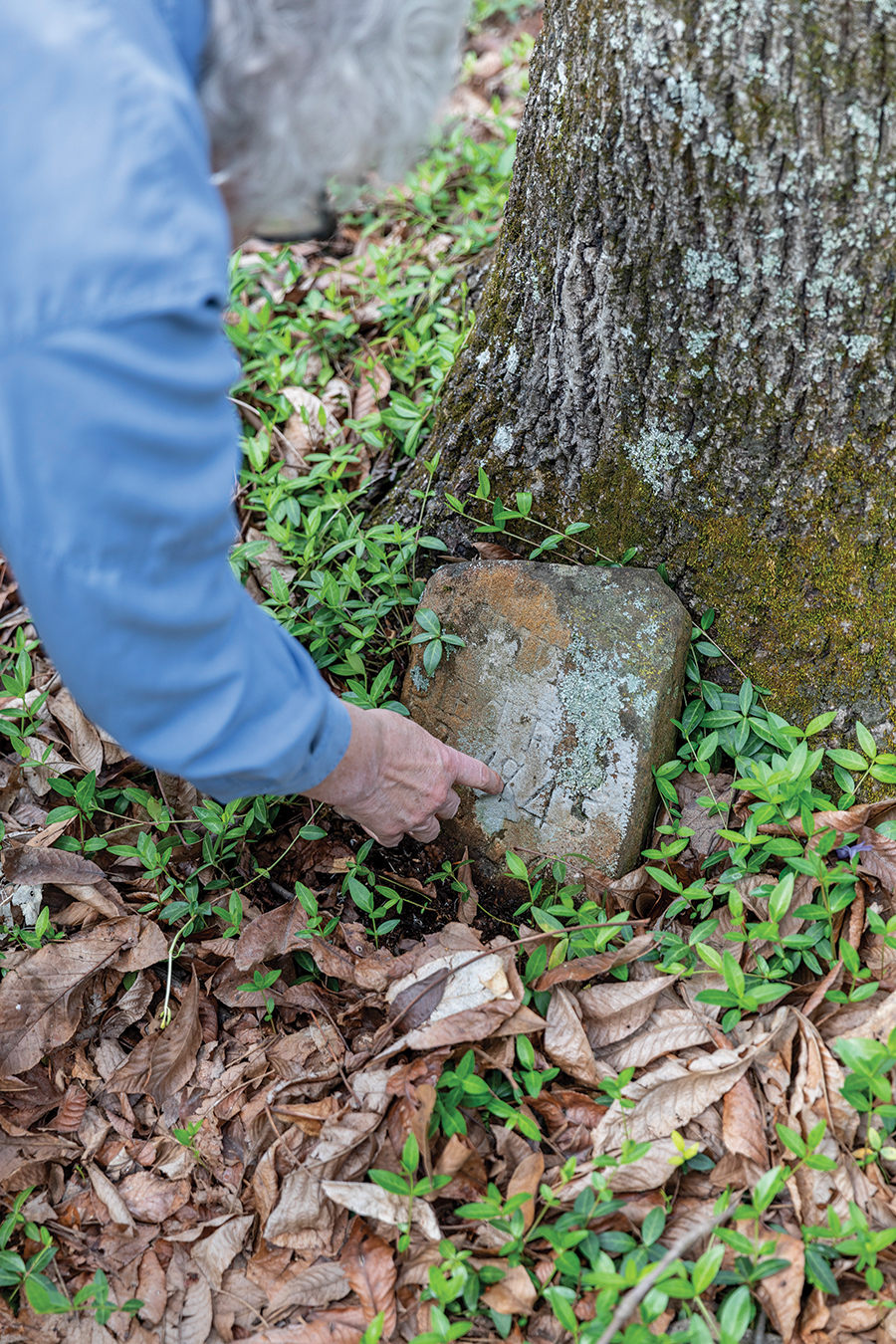
The world remembers him today as the priest-turned-environmental-sage whose awakening and influential writings on the imperiled Earth were an early call to humanity to save nature in order to save itself. Berry’s groundbreaking lectures and books launched a generation of inspired environmentalists interested in the nexus of religion, human evolution and nature. Considered one of the leading thinkers in the modern environmental movement in America, Berry honored his vow of poverty, humbly referring to himself as a “geologian.” Ann Somers’ daddy was Joe Berry, the ninth child in the sequence. Cousin Joe Kelleher’s mama, Teresa, was tenth. Teresa named her son after Uncle Joe, who eventually took over running Berico Fuels from his father and moved wife Jean and their seven children — Ann among them — to a house on a lake on Four Farms Road near Horse Pen Creek.
“It was kind of a log house and magical for all the Berry cousins,” recalls Joe Kelleher. “Ann’s daddy had a rope in his living room and when we cousins came out on summer Sundays, the first thing we had to do was climb the rope.” Next? “Cleaning Uncle Joe’s pigeon coop. Then we swam out to a pier in the lake.” Kelleher recalls that his Uncle Joe taught them how to shoot guns safely and encouraged them to explore the outdoors. “That usually meant getting lost in the woods but we always found our way back,” he says. “The woods were where the Well-Spring [Retirement] community sits today. It was a glorious way to grow up.”
Ann Berry had hoped to become a psychologist after finishing undergraduate studies at Villanova University, but that was not to be, so she applied for a job no woman ever had ever sought, as a lake warden for the City of Greensboro — guardian of lakes Higgins, Brandt and Townsend.
“Looking back, it was a great job because it tapped into something in my makeup from childhood, a love of nature and life in the wild.” After she graduated from Appalachian State with her Master of Science degree in Biology in 1980, Distinguished Professor Bob Gatten, then head of the Biology Department at UNCG, recruited her to join the faculty and she has been there ever since. Recently she has also become the associate director of the Environment and Sustainability Program at the university.
About 35 years ago, she and then-husband George Somers built the house Ann designed in the forest off Church Street Extension, where they raised two sons, Noah and Abe.
Leading the way up a short path to a historic cemetery once belonging to the Heath and Smith family, some of its gravestones date to the early 1800s.
Ann’s restoration efforts have included removing limbs, small trees and setting upright some long ago fallen grave markers. Four newer memorial stones stand prominently as one approaches the site.
One belongs to her Aunt Margaret, who died at age 100 last year.
Two others remember a nephew and granddaughter who died in their youth.
The fourth is a memorial stone to Thomas Berry, whom the family affectionately called “Uncle Brother.” Its inscription reads:
With love and gratitude for Uncle Brother, Father Thomas Berry, scholar, wisdom teacher, mentor, friend. Earth is the maternal source whence we come, to which we return.
Both Ann and Cousin Joe enjoyed close relationships with “Uncle Brother.”
During the 1970s when Joe attended Holy Cross in Massachusetts, he frequently stopped to visit Thomas Berry at his spiritual retreat at Riverdale, and once spent a week helping Uncle Brother restore his residence on the property.
“He was so drawn to rocks and rivers and such, I once asked him about animals that were going extinct everywhere in the world and what we were supposed to do about that? He looked at me and replied, ‘My job is to get you to think about it. Your job is to fix it!’ That was Uncle Brother!” Joe says with his booming laugh.
“That was exactly what he said,” agrees Cousin Ann. “That was the message.”
When Thomas Berry retired from public life in 1994 and moved home to Greensboro’s Well-Spring Retirement Community — built in the former woods where the Berry Cousins explored the natural world — Ann Berry and Uncle Brother met and talked weekly; and she has dozens of composition books full of notes about their conversations. Thomas Berry passed away on June 1, 2009. He was 94.
The rotunda of the Kathleen Clay Edwards Family Branch Library contains a beautiful poem by Thomas Berry called “A Child Awakens to the Universe.”
“I think about our conversations a lot these days,” Ann admits as she and Joe walk back down the hill to her house. She glances up at the trees just exploding with spring green, alive with life, promise, birdsong.
“Uncle Brother believed we are evolving as a species. I’m hopeful that is true. That the lessons we could learn from this current crisis may be an awakening, if only we would listen.” OH



